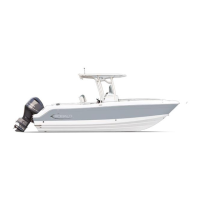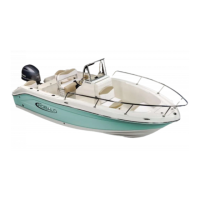2014 Owner’s Manual
OWNER’S/OPERATOR’S MANUAL
P.O. Drawer 928
300 Industrial Park Blvd.
Nashville, GA 31639
Phone: 229-686-7481 Fax: 229-686-3660
This manual has been compiled to help you operate your boat with safety
and pleasure. It contains details of the craft, typical equipment supplied
or fi tted, its systems and information on its operation and maintenance.
Please read it carefully and familiarize yourself with your boat before us-
ing it.
If this is your fi rst boat, or you are changing to a new type, for your own
comfort and safety please ensure that you obtain handling and operat-
ing experience before “assuming command” of the boat. Your dealer or
national sailing federation or yacht club will be pleased to advise you of
local sea schools or competent instructors.
Please keep this manual in a secure place and hand it over to the
new owner when you sell the craft.
For a complete list of standard and optional features and equipment, consult your local Robalo dealer. Due to a policy of continual product improvement, specifi ca-
tions are subject to change without notice. The weights and volumes shown are estimated and can vary from boat to boat because of equipment, etc.
Robalo boats meet or exceed both NMMA and U.S. Coast Guard standards.
Est.9/18/13


